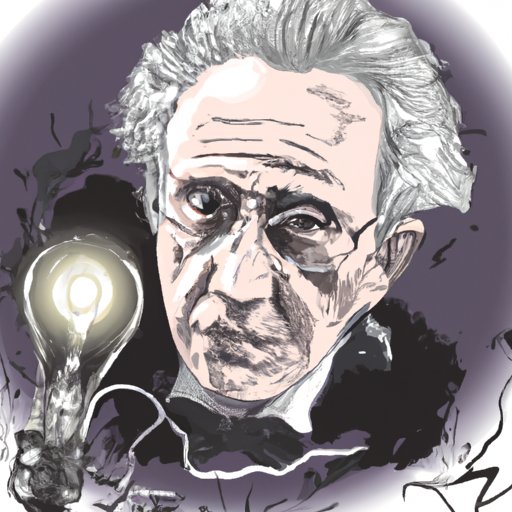Introduction
Thomas Edison is widely regarded as one of the greatest inventors in history. He was an American entrepreneur and innovator who held over 1,000 patents and is credited with numerous inventions that have had a lasting impact on our society. One of his most renowned inventions is the light bulb, which revolutionized the way we use energy in our homes, businesses, and everyday lives.
In this article, we will explore how Thomas Edison invented the light bulb and uncover the steps he took towards this revolutionary discovery. We will look at the creative process behind his invention, the materials he used, and the experiments he conducted to overcome challenges.
A Closer Look at Thomas Edison’s Revolutionary Discovery of the Light Bulb
Thomas Edison was motivated by the problem of providing a reliable source of illumination for indoor lighting. At the time, gas lamps were the primary source of artificial light, but they were expensive and posed safety hazards due to their open flame. Additionally, their light was dim and unreliable.
Edison sought to create a better alternative, leading him to experiment with electricity and develop the first practical incandescent light bulb. The invention of the light bulb would go on to revolutionize the way we use energy in our homes and businesses, and it is still in use today.

Exploring the Creative Process Behind His Invention
In order to understand how Edison created the light bulb, it is important to look at the creative process behind his invention. Edison was known for his methodical approach to problem solving, which included conducting extensive research, experimenting with various materials, and making improvements based on trial and error.
He also took an unconventional approach to inventing, often working in spurts of intense activity followed by periods of rest and contemplation. This allowed him to stay focused on the task at hand and come up with creative solutions to problems.
Examining the Steps He Took Towards Inventing the Light Bulb
Edison began his work on the light bulb in 1878, when he started experimenting with different materials and designs. He worked on the project for nearly two years before finally achieving success in October 1879.
Edison’s invention of the light bulb was the result of a long and arduous process. He experimented with over 6,000 different materials, tested hundreds of prototypes, and made numerous modifications to the design before finally creating a reliable source of illumination.
Uncovering the Steps That Led to Thomas Edison’s Creation of the Light Bulb
In order to understand the steps Edison took towards inventing the light bulb, it is important to examine the materials he used and the experiments he conducted. Edison began his work by experimenting with various materials, such as bamboo, carbonized cotton thread, and platinum. He eventually settled on carbonized paper, which he encased in an evacuated glass bulb.
Edison then conducted numerous experiments to determine the optimal filament material. After testing several hundred materials, he decided on a carbonized bamboo filament, which he believed would be strong enough to last for up to 1,200 hours. He also designed a vacuum pump to evacuate the air from the bulb, which was necessary to prevent the filament from burning out too quickly.
Edison’s experiments proved successful and the light bulb was ready for commercial use. He received a patent for the invention in January 1880, and the rest is history.
Conclusion
Thomas Edison’s invention of the light bulb revolutionized the way we use energy in our homes and businesses. His creative process, which involved researching, experimenting, and making improvements based on trial and error, led to the creation of a reliable and efficient source of illumination.
Today, Edison’s invention is still in use and has had a lasting impact on our society. His legacy as one of the greatest inventors in history continues to inspire generations of innovators.
(Note: Is this article not meeting your expectations? Do you have knowledge or insights to share? Unlock new opportunities and expand your reach by joining our authors team. Click Registration to join us and share your expertise with our readers.)
